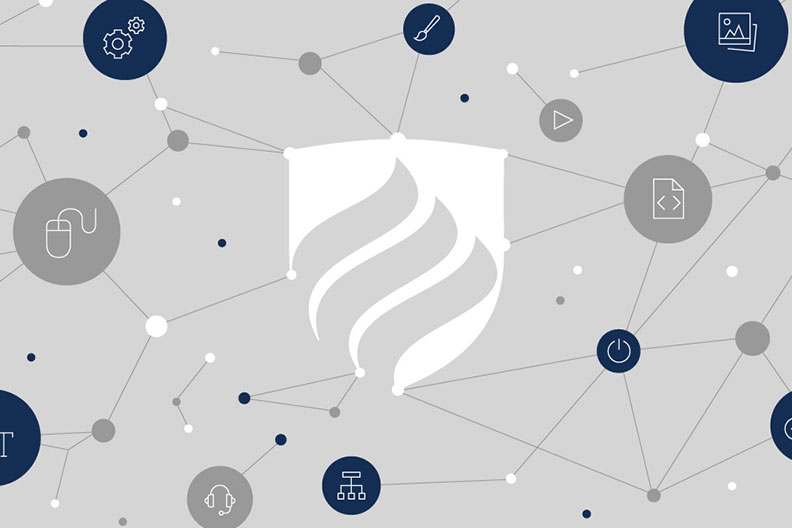What is Multimedia Journalism?
UNDERGRADUATE PROGRAMS | 4 MIN READ

Journalists are storytellers. They observe the world and share what they see.
Multimedia journalists are storytellers who work across many dimensions. They embrace the traditional tenets of journalism: objectivity, accuracy, credible sourcing and strong writing. But they tell their stories through some combination of text, images, sound, video and graphics.
Journalism has been around for centuries, but multimedia journalism is a relatively new—and still developing—career path. It grew out of a mushrooming of digital platforms and social media channels, and a shift in people’s preference for how they consume the news. Increasingly affordable and accessible technology has only added momentum to the trend.
All these factors put a premium on conceptualizing, producing and packaging content.
Mastering Multimedia Journalism
On one hand, multimedia journalism provides almost infinite ways to tell a story. On the other hand, journalists also have so many more choices to make about how, when and where to tell that story.
You could use animation, embed tweets, add music or create an interactive graphic. Even deciding on a platform can complicate things—the options range from websites to podcasts, TV, social networks, radio, newspapers and magazines. More than likely you’ll need to adapt the content to a combination of those.
So how do you choose the appropriate platform? Consider:
- What elements do you need to include to grab and hold the audience’s attention?
- What media will be the most accurate and accessible?
- What is the ideal length of your story? How much is too much?
These can be tricky questions, with no clear answer.
Fortunately, as the field grows, experts are emerging. More colleges and universities are incorporating multimedia studies into their journalism programs or channeling those concepts into a separate major. Elmhurst University launched a multimedia journalism major in the fall of 2019.
Students should expect to engage with the multiple formats used today to report the news. Courses for aspiring multimedia journalists include journalism stalwarts such as media writing and news reporting but also digital storytelling and web design.
What Does a Multimedia Journalist Do?
You’ll dive into video editing, art software, web design, film production and audio engineering.
That’s because the demands on multimedia journalists are many: In addition to exercising solid news judgment and working under sometimes rigid time constraints, they have to flex their creative muscles and carefully determine what the end product should look and sound like.
“The journalist today needs to have more than reporting and editing skills,” says Ron Wiginton, professor of journalism and English at Elmhurst University. “From blogs to video production, the media landscape demands that journalists be prepared to present stories in print and cyberspace.”
That means that when you’re in the newsroom or out covering a story, you’ll need to assess not just what makes for a must-read story but also a compelling video or audio presentation. So it pays to know the basics of recording, editing and producing—the techniques taught in a multimedia journalism program.
How Much do Multimedia Journalists Make?
If you’re curious, you can check out the U.S. Bureau of Labor Statistics’ overview of media and communication occupations. For example, the median salary for reporters, correspondents and broadcast news analysts in 2018 was just shy of $44,000, as was the median salary for broadcast and sound engineering technicians.
Other careers to explore in the category include editor, camera operator and photographer.
Still more opportunities—such as a career as a public relations specialist—exist in the field of digital marketing communication, where employers look for the same types of skills.
But keep this in mind: Incomes vary widely in the profession, and most who choose to enter it won’t be solely motivated by money.
Why is Multimedia Journalism Important?
Though journalism as a whole has been shedding jobs for more than a decade, multimedia journalism has emerged as a beacon of hope for the future. New outlets, such as podcast networks, streaming services and web startups, mean new job opportunities and new audiences.
“With the amount of digital content being produced each year, and with no sign of it slowing down, the demand for individuals with these skills will only continue to increase,” says Kristyn Jo Benedyk, digital media program director at Elmhurst University.
Opportunities for growth are everywhere. There are always more skills to be mastered. You will work with similarly creative, driven folks. You will meet and learn about people from all walks of life. You’ll feel the rush of chasing down a story and sharing it with the public.
Study Multimedia Journalism at Elmhurst
Request more information today!


